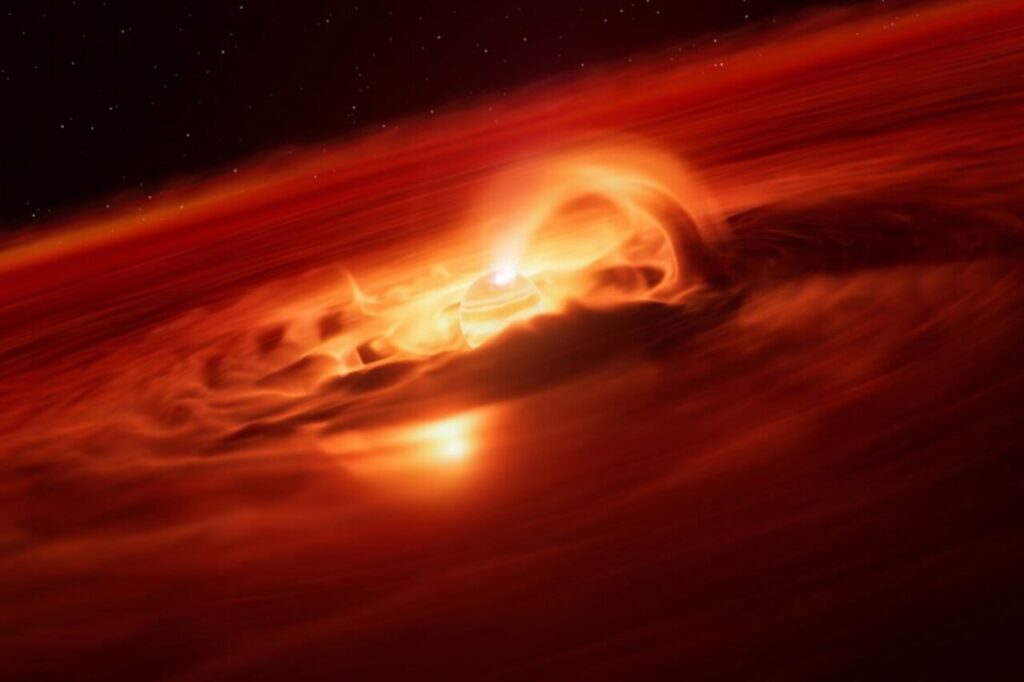
Astronomers have uncovered a rogue planet, officially named Cha 1107-7626, that is consuming surrounding gas and dust at an astonishing rate of 6 billion tons per second. Located approximately 620 light-years away in the Chameleon constellation, this celestial body is in the midst of its formation process, feasting on a disc of material left from its birth. The findings were published on August 3, 2023, in The Astrophysical Journal Letters, marking a significant milestone in our understanding of planetary growth.
Rogue planets, unlike their star-bound counterparts, drift freely through space. They can be formed either around stars and later expelled or arise independently from collapsing clouds of gas and dust. Even in their isolated states, these planets often retain discs of material. For Cha 1107-7626, the accretion process—where it gathers material from its surrounding disc—has shown a dramatic increase; by August, the planet was accreting material at a rate eight times faster than just a few months prior.
Víctor Almendros-Abad, an astronomer at the Astronomical Observatory of Palermo and lead author of the study, emphasized the significance of this discovery: “This is the strongest accretion episode ever recorded for a planetary-mass object.” This revelation challenges the perception of planets as stable entities, showcasing the dynamic nature of planetary bodies in isolation.
Unprecedented Growth and Magnetic Activity
Despite its youth, Cha 1107-7626 boasts a mass five to ten times that of Jupiter. The team of astronomers noted that the planet’s remarkable growth may be linked to its magnetic activity, which appears to accelerate the influx of material into its disc. This observation is particularly intriguing; the chemistry of the disc has shifted during the accretion process, with the presence of water vapor detected for the first time.
The discovery of water vapor is noteworthy, as this phenomenon has previously only been observed in stars. This suggests that even smaller planetary bodies can possess strong enough magnetic fields to influence their surrounding material significantly. Co-author Amelia Bayo, an astronomer at the European Southern Observatory, remarked, “The idea that a planetary object can behave like a star is awe-inspiring and invites us to wonder what worlds beyond our own could be like during their nascent stages.”
The implications of this research extend beyond the individual characteristics of Cha 1107-7626; it opens up new avenues for understanding planetary formation and the diverse behaviors of celestial bodies in the universe. As astronomers continue to monitor this rogue planet, further insights into its growth and the dynamics of rogue planets may emerge, reshaping our comprehension of planetary science.







